10 Best Ground Cover Plants for Shade in Your Yard in 2023
Written by Ivy
Dec 14 2022
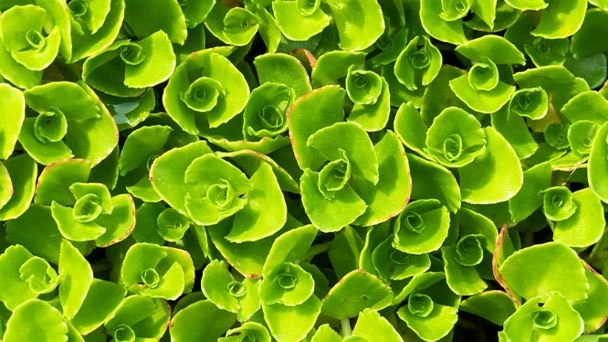
Your lawn or garden will benefit from adding a ground cover. It prevents soil erosion in addition to requiring little maintenance for the most part. If your backyard is shaded or there are other dark spots on your property, you might not be able to grow ground cover there. There are many types of ground covers that thrive in the shade; some even prefer it. Most perennial and hardy ground covers are tolerant of shade. Additionally, some people can tolerate a short period of sun exposure during the long summer days. There are many options, so you can decide whether you want a ground cover that blooms or one that resembles grass more. Ten shade-loving ground-cover plants that you will adore are listed below, let's enjoy these ground-cover plants for the shade of your garden!
1. Sweet Woodruff (Galium Odoratum)
.webp)
Sweet woodruff is unquestionably among the plants that do well in the shade. Even with only a few hours of sunlight per day, it grows vigorously and looks lovely in the shade of trees. This ground cover has a 15-inch height and blooms in the first month of summer with white stars that last through the fall. Sweet woodruff has a divine fragrance in both its leaves and flowers. After flowering is complete, it yields spikey, oblong fruits. You won't have any trouble growing sweet woodruff if you reside in USDA Hardiness Zones 5 through 8. Soil that is rich, slightly acidic, and full of moisture are both essential. It is chicken-unfriendly as well as resistant to deer.
2. Wild Ginger (Asarum Shuttleworthii)
.webp)
One of the simplest ground covers to grow is wild ginger. It has year-round green, heart-shaped variegated leaves. USDA Zones 6 through 9 are hardy for it. The dense ground cover that wild ginger produces is ideal for smothering weeds. It grows slowly, reaching a height of only four inches, and spreads via rhizomes that creep. Once established, wild ginger can withstand drought and prefers acidic or neutral soil with good drainage. Because of its thick, sturdy roots, it thrives in rocky areas.
3. Bunchberry (Cornus Canadensis)
.webp)
Bunchberry is a contender that enjoys shade but is frequently overlooked. It creates a vibrant green mat that is so dense that no weed has a chance. Long, reddish-tinted veins run throughout the shiny, ovular leaves. The abundance of lovely leaves creates a stunning effect.
The USDA Zones 2 through 7 are suitable for this lovely dogwood family member, who prefers acidic soil. Native to both North America and Asia, bunchberry is also referred to as creeping dogwood. It has red berries after producing white flowers, and it spreads quickly and widely. Bunchberry prefers a cooler climate and will not flourish in hotter regions, but if you live in a northern region, this one is a winner.
4. Dwarf Solomon's Seal (Polygonatum Humile)
.webp)
It is lush and under eight inches tall, with soft green leaves on its stems. It is a native of China, Japan, Korea, and a small portion of Russia. It belongs to the asparagus family. Bell-shaped flowers emerge in the spring, followed by tiny black berries. Since it develops more slowly than some of the other ground covers on this list, you might need to pull weeds for the first growing season. Once this is complete, the rhizomes will continue to grow, producing a dense mat that enjoys the shade. The dwarf Solomon's seal thrives in acidic soil and gets along well with tall shrubs and evergreen trees.
5. Lilyturf (Liriope Muscari)
.webp)
This shade-loving ground cover is ideal for people who live in USDA Hardiness Zones 6b through 10. It is a native of East Asia and is frequently called monkey grass. It is a typical ground cover plant in China and naturally grows in forested areas with shade. It has dark green, strap-shaped leaves that grow in clumps about ten inches high. Purple flower clusters appear in the summer and protrude from the foliage. There are currently cultivars available with white flowers as well. Following the flowers, winter-long black berries develop. Lilyturf will grow more quickly in a warmer environment. Once it has firmly established deep roots, it is not picky about the type of soil it grows in and will tolerate drought conditions. Swampy or standing water are not conducive to it.
6. Strawberry Begonia
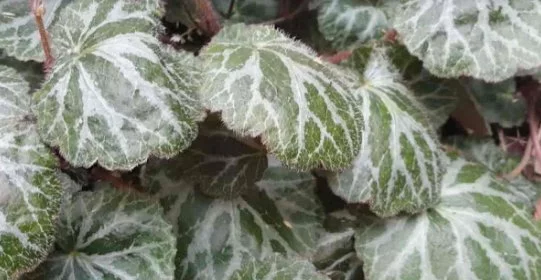
It doesn't happen often that a plant can be categorized as a houseplant, a trailing plant for containers, and an evergreen ground cover.
The versatile strawberry begonia (Saxifraga stolonifera) is neither a strawberry nor a begonia. Its rounded, dark green leaves with white veins and maroon undersides, as well as the way its red stems spread like strawberry plants do, are the reasons it was given its name.
In the late spring to early summer, this plant creates a mat that clings to the ground and is topped with delicate white flowers that float atop 15-inch stems. A moist, well-drained soil and partial to complete shade are ideal.
Although the strawberry begonia can survive the winter in USDA Zones 7 through 9, some people in Zone 6b have reportedly also had success with it. Put it out of the ground and into a container to grow as a houseplant until the following spring if you're unsure if it will survive the winter outdoors where you live.
7. Golden Groundsel
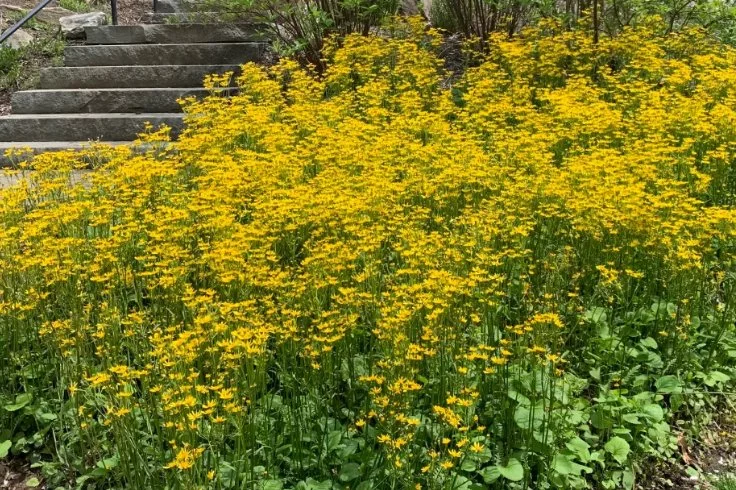
There are so many reasons to grow golden groundsel (Packera aurea).
This native, weed-repelling ground cover quickly fills awkward spaces beneath tall trees, by the water's edge, or in that difficult strip between the sidewalk and the street through seed and offshoots. Its bright golden yellow, daisy-like flowers, which bloom from late spring to early summer, are a favorite of pollinating bees and butterflies.
Consider planting golden groundsel there instead of grass if you live in USDA Zones 3 through 9 and have a low area where the grass struggles to grow because it's too wet. If it's in a sunny location, it will gladly absorb the extra moisture. It's acceptable for the soil to occasionally dry out in shade.
When not in bloom, the heart-shaped, dark green leaves with purplish undersides make a lovely, deer- and rabbit-resistant ground cover.
8. Nodding Onion
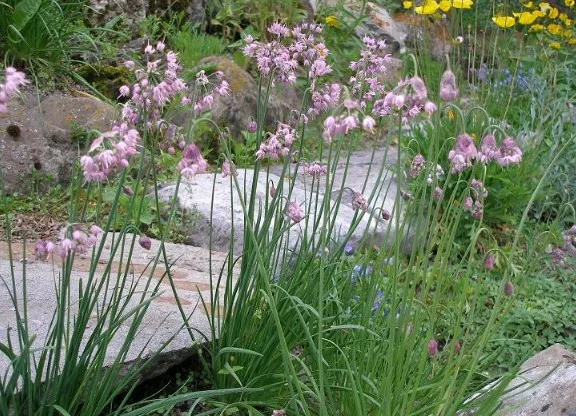
The use of an onion as a ground cover has some significant benefits, even though you may not have thought of it. Pollinating bees, butterflies, and hummingbirds enjoy it, but deer and rabbits avoid it.
The leaves, bulblets and bulbs of the nodding onion plant are edible with a strong onion flavor, but it's more common to grow Allium cernuum for its easily identifiable flowers. To recognize this species, look for the distinctive crook at the top of the stem.
If you want a flowering ground cover but would prefer something more colorful, try this ornamental onion if you have a sunny to partially shaded spot in USDA Zones 3 through 9. From early summer to midsummer, it blooms with whimsy-inspiring bright lilac pink flowers. For it to thrive and reseed, ordinary soil will do. It can withstand drought after becoming established.
9. Himalayan Maidenhair Fern
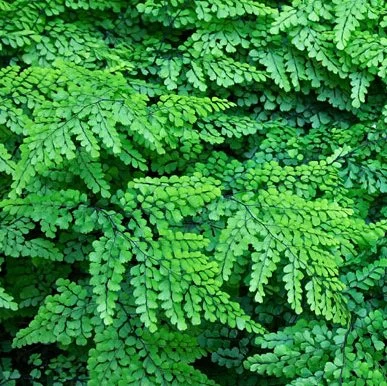
Although this elegant fern has the delicate appearance of a pearl necklace, it is hardy enough to survive the harsh winters in its native habitat of the Himalayan Mountains. It is used as a six to ten inch tall, slowly spreading ground cover for partial to complete shade here in North American home gardens.
Consider growing it as a lush carpet at the base of your Lenten roses or big leaf hydrangeas. It is fascinating to observe in the spring as its semi-evergreen foliage emerges bronze, then brightens to fresh green and hides the growth of the previous year.
This colonizing fern prefers soils that are humus-rich, moist, but well-drained, and are hardy and resistant to deer in USDA Zones 4 through 8. It dislikes hot, muggy weather but does well where the temperature drops at night. If you find new shady spots for it in your landscape after it has settled in, this fern will quickly spread and transplant without much difficulty.
10. Hardy Plumbago
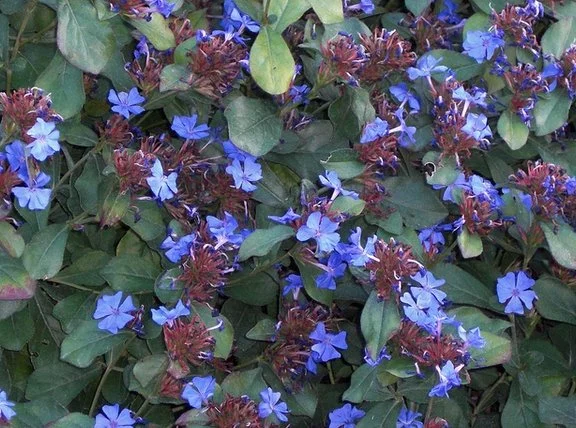
Particularly later in the season, true blue flowers are uncommon. But with hardy plumbago (Ceratostigma plumbaginoides), you'll enjoy a carpet of cerulean blue blooms every year from late summer to frost.
This quickly dispersing ground cover grows into a compact, six to ten inch tall mass of glossy green foliage that blushes bright red and bronze starting in early fall. The shade is suddenly illuminated by a kaleidoscope of red, blue, and green, resembling fireworks at ground level.
This species of plumbago can withstand cold temperatures up to USDA Zone 5, but it will fare better in the winter if you give it a light mulch or cover it with snow. Through USDA Zone 9, it can withstand heat. Morning sun and afternoon shade are ideal for its growth.
If it does not resurface at the start of spring, don't be concerned. Due to its late emergence, this ground cover is perfect for concealing the spent foliage of spring flowering bulbs.
Latest Updated
- Benefits of Bugleweed - 7 Science-backed Health Benefits
- Bugleweed Dangers & Side Effects - Is It Poisonous?
- How to Plant Evergreen Trees - What You Should Know
- When to Plant Evergreens - Grow Guide for Evergreen Trees
- 12 Wonderful Evergreen Shrubs for Your Garden
- 12 Popular Evergreen Plants with Pictures for Beginners
- When And How To Prune A Lilac Bush Like a Pro
- How to Grow & Care for Lilac Vine (Hardenbergia Violacea)
- Japanese Lilac Tree (Syringa Reticulata) Care & Propagation Guide
- Shumard Oak Pros and Cons - What to Know
Popular Articles
- Winter maintenance of Antirrhinum Majus
- How to Grow Terminalia Mantaly Tree
- How to Grow and Care for Crossostephium Chinense
- How to grow Antirrhinum Majus in spring
- Peristeria Elata (Dove Orchid) Profile: Info & Care Guide
- Underwatered Snake Plant (Sansevieria Trifasciata) - Signs And How To Fix
- How to Care for Brazilian Jasmine Plant (Mandevilla Sanderi)
- How to Grow & Care for Graptopetalum Purple Delight in Summer
- Rosa Chinensis (China Rose): Plant Growing & Care Tips
- How to Care for Baby Sun Rose (Aptenia Cordifolia)